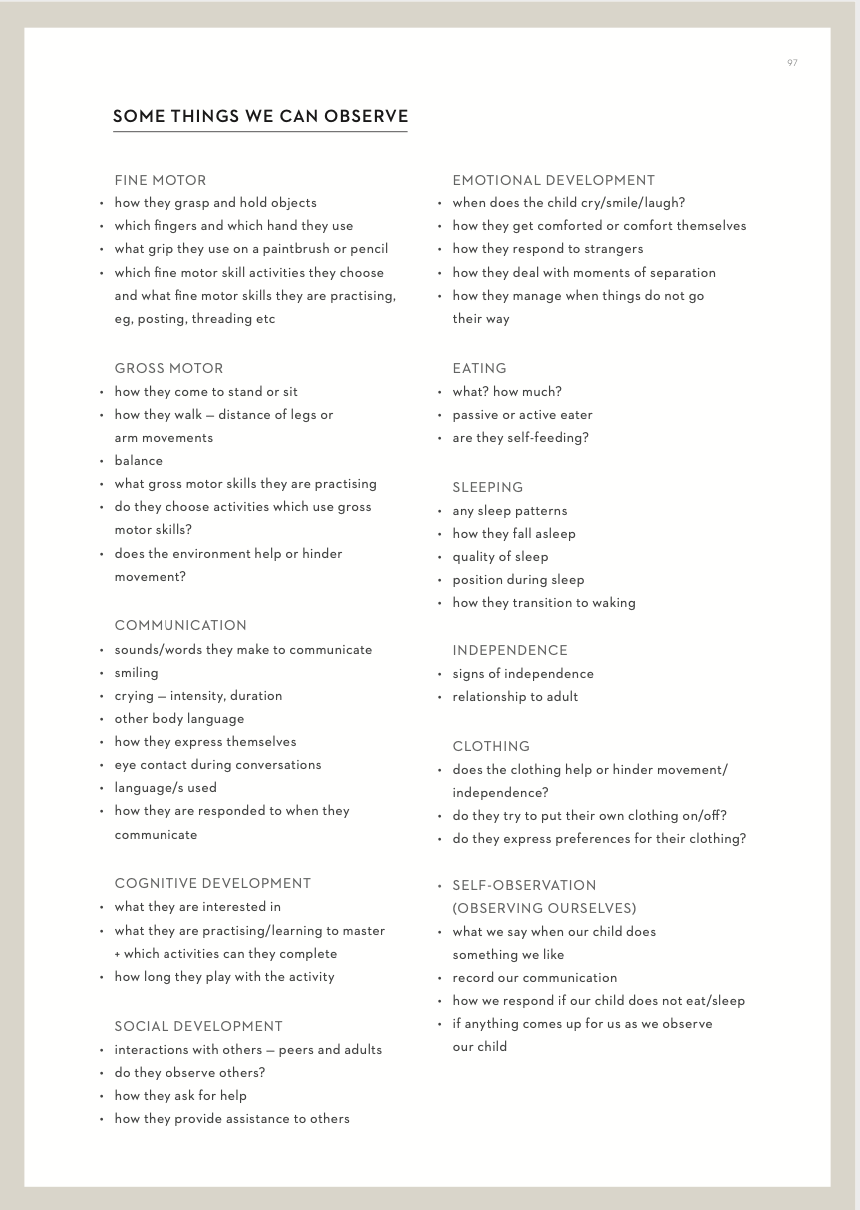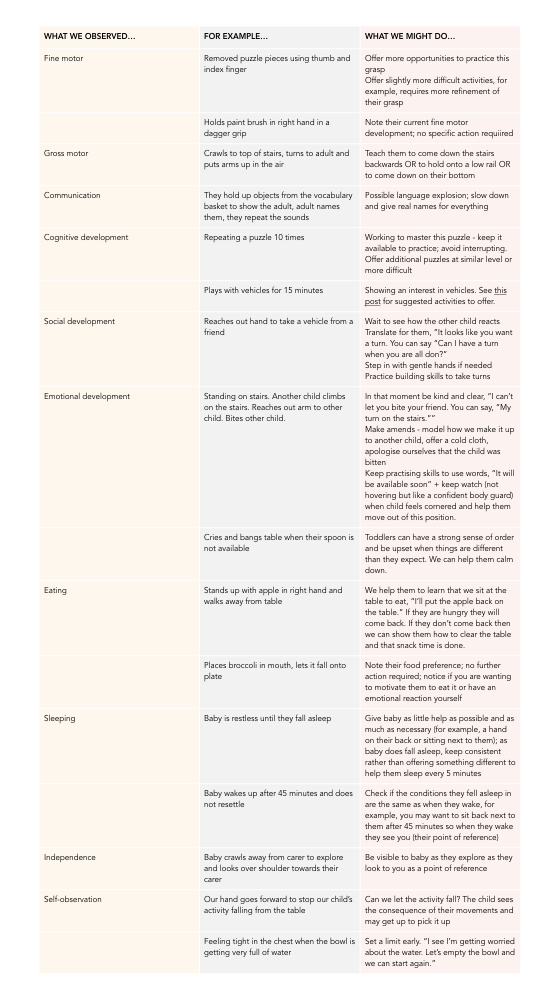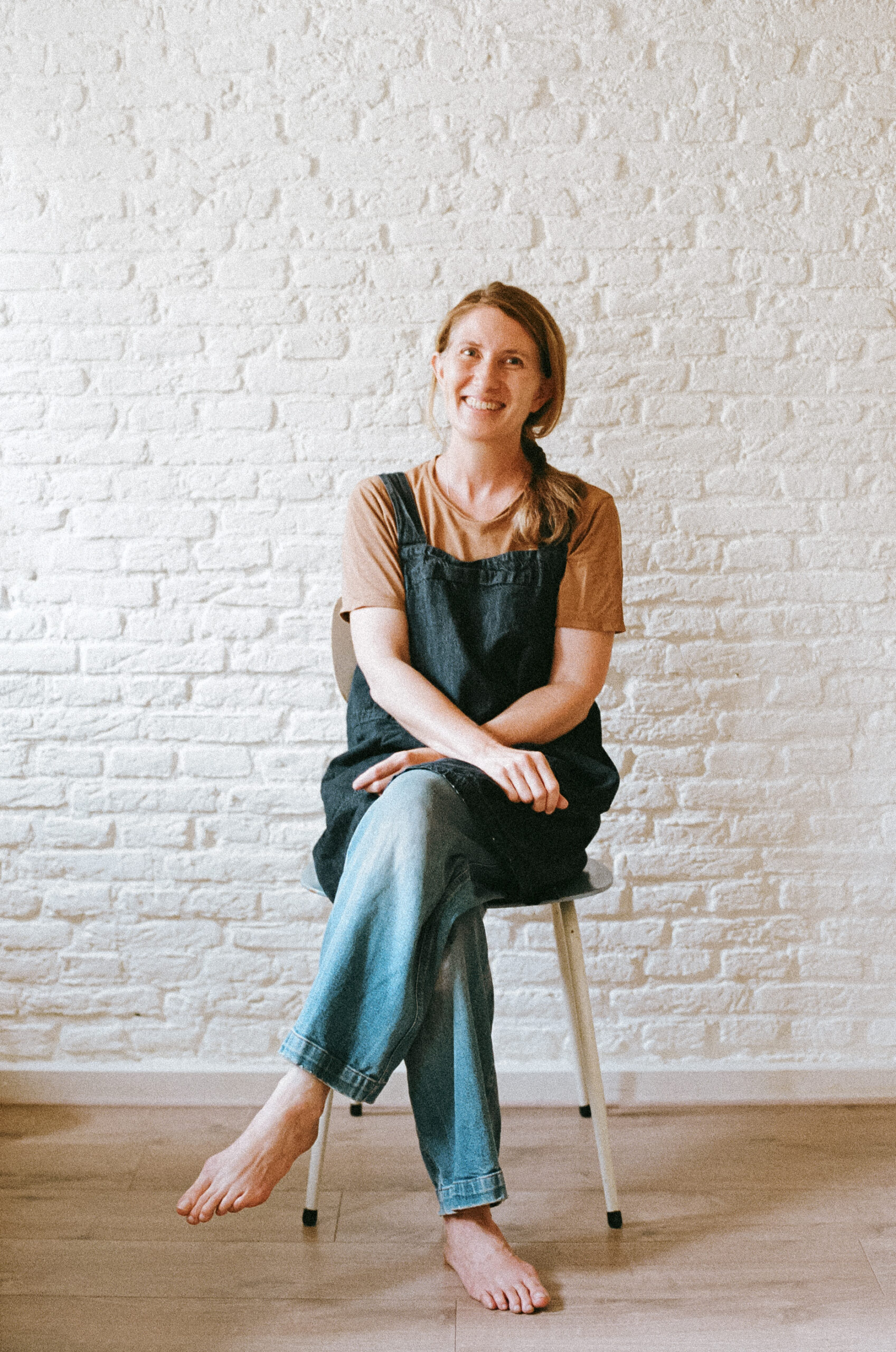Everything you need to know about Montessori observation and why it’s helpful
Have you ever had the chance to ask a Montessori teacher a question, something that is really troubling you, and they’ve said, “Just observe.”
As a Montessori teacher who has done 250 hours of observation in my training and every day in the classroom for the last 15+ years, it’s absolutely the best advice we can give.But what does it actually mean?
Let’s look first at what observation is, then what we can observe, and what our observations might mean. Hopefully it will be everything you need to know about Montessori observation.
What is observation?
When I describe observation to parents coming to my parent-child classes, I say to them, “It’s like being a scientist for the day. Imagine you’ve never met your child before, be curious, and write down in objective language everything you see.”
Being objective means removing any information we know already, any preconceptions, and judgements, and allows us to see our child with fresh eyes.
An objective statement would be, “Tom repeated the puzzle 10 times.” We see exactly how many times he repeated it instead of a subjective statement like “Tom really likes puzzles” which may or may not be true.
It is ideal to actually write it down. It helps to keep us focused to stay on task and we can look back to our observation notes over time. What a beautiful record we will have of our child’s development, things they were saying, and how their independence evolved.
3 reasons to do observation
- We often see much more detail when we observe so we come to know our child better.
- We can see when there is a change in their development, for example, holding the pencil in a different way, or having success with something they have previously struggled with.
- We remember to see who they are, not who we want them to be. We see them with new eyes as they are developing every day, every hour and every minute. And instead of coming with the idea of what we want to teach them, they show us what they want to learn and then we can see how we can support that.
What we can observe
Here is a table from my book, The Montessori Toddler, of things that we can observe.
We could choose to focus on one thing at a time, for example, looking at their fine and gross motor movement and writing down everything we observe in this area.
Or we can do a running record, where we describe everything they do, including movement, language, cognitive development, social development etc.
Similarly if there is a problem with biting, pushing, throwing, we can have this as our focus and observe to see what time of day this might happen, age of children involved, are they hungry, what are they trying to communicate, etc.

What to do with these observations
I think this is becoming the most common question I get after an observation exercise. Parents find it interesting to see their child in this way, but ask themselves, “What do I do with the information now?”
I’ve started to add this as a follow up step when parents do observations in our parent-child class. “This is what you observed today. From this, what is one change you could make this week?”
And sometimes it is simply seeing where they are at today without the need to change anything, simply reminding us where they are on their developmental path.
Here are some examples:

Summary
Observation is a tool for us to better understand our child, see things through their eyes, and look at how we can support them in the best way.
We are learning to follow the child, accept them for who they are, and we will set kind, clear limits if needed.

Simone Davies has more than 20 years’ experience as an AMI Montessori educator. Simone is the author of “The Montessori Toddler” and co-author of “The Montessori Baby” and “The Montessori Child” books, comprehensive guides to raising children in a Montessori way. She currently runs parent-child Montessori classes in Amsterdam at her school Jacaranda Tree Montessori. She also has a popular blog, instagram and podcast “The Montessori Notebook” and is mother to two young adults.